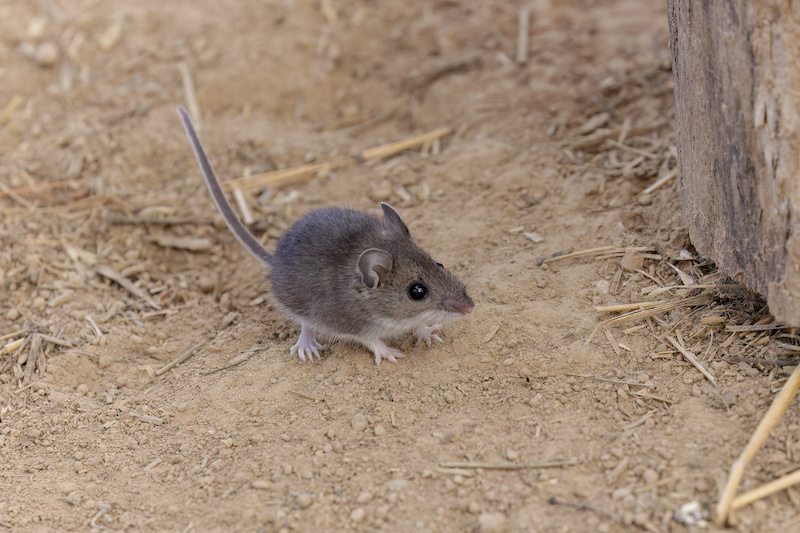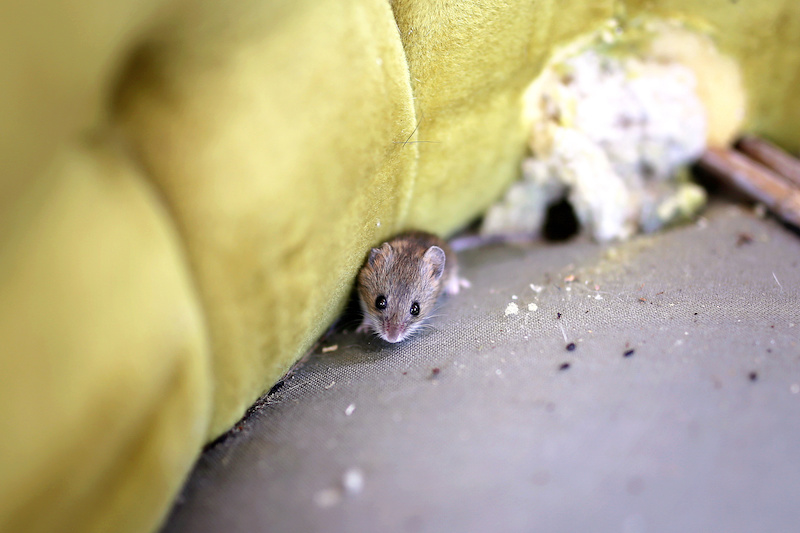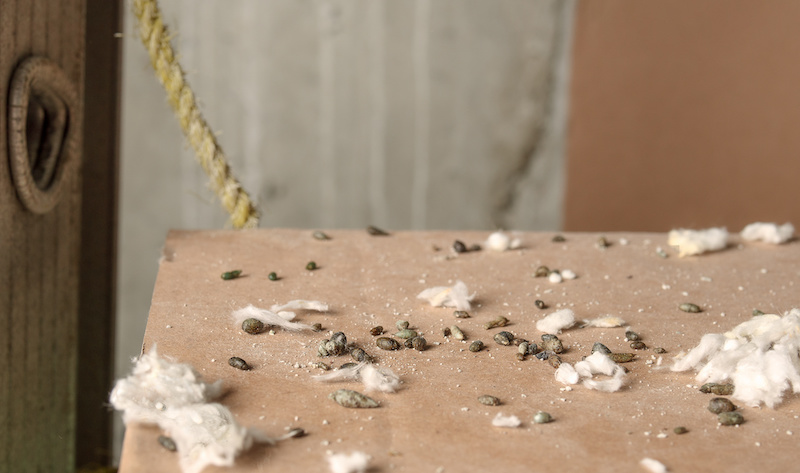The deer mouse and house mouse might seem like they’re cut from the same cloth, but they come with their own quirks and challenges.
If you’ve ever wondered what sets these two apart, read on! We’re diving into the ultimate rodent showdown—deer mouse vs. house mouse!
Spotting the Differences: Deer Mouse vs. House Mouse
Let’s start with the basics: appearance. Deer mice, with their reddish-brown fur and white underbellies, resemble tiny woodland creatures that blend into their natural habitat. Their tails are bi-colored, dark on top, and lighter underneath, which adds to their distinctive look.

In contrast, house mice are sleek, grayish-brown, and have a more compact build, making them adept at sneaking into your home. Their tails are uniformly covered in fine fur, which helps them keep a low profile.

When it comes to habits, these two rodents have vastly different lifestyles. Deer mice are the ultimate adventurers of the rodent world, thriving in rural and semi-rural environments such as fields, forests, and meadows.
They’re skilled at climbing and can often be found in nests tucked away in tree branches or hidden in piles of leaves. Their diverse diet includes seeds, fruits, and insects they find throughout nature.
House mice, on the other hand, are the quintessential city dwellers. They’re right at home in your walls, attics, and basements. Their menu mainly consists of crumbs, leftovers, and whatever they can find in your pantry. These crafty critters can squeeze through the tiniest gaps to make themselves at home.
Behavior and Lifestyle: Deer Mouse vs. House Mouse
Now, let’s talk behavior. Deer mice are relatively solitary creatures, preferring the great outdoors to indoor social scenes. They are skilled foragers and nest builders, using materials like leaves, grass, and twigs to create cozy homes in their natural environment. Deer mice are also more active during dusk and nighttime, staying hidden during the day to avoid predators.
House mice, however, are social creatures. They love company and often form colonies within our homes. These mice are expert nest builders, using materials like paper, fabric, and insulation to create cozy nests in your walls or hidden corners. They’re also more likely to be active at night, sneaking around your house while you’re sleeping. They have a knack for finding the smallest of entry points, which makes them particularly hard to keep out.
Impact on Your Home: Deer Mouse vs. House Mouse
Deer mice generally prefer staying outside but can occasionally wander into homes, especially during colder months. They might seek shelter in attics or basements but are less likely to cause extensive damage compared to their house-dwelling counterparts. However, they can still pose health risks, as they are known carriers of hantavirus, a serious virus transmitted through their droppings and urine.

House mice, however, are a different story. These little invaders can cause a lot of trouble. They chew through wiring, insulation, and even wooden beams, leading to potential fire hazards and structural damage.
Their droppings and urine can contaminate food and surfaces, spreading diseases and creating an unhygienic environment. If you spot one of these critters in your home, you’ll want to act fast.
Preventing Infestations: Deer Mouse vs. House Mouse
You can try several different strategies to prevent these rodents from turning your home into their personal playground.
Outdoor Prevention for Deer Mice
Deer mice, the more outdoorsy of the two, are less inclined to invade your home but can still be a nuisance if they find the right opportunity. Here’s how to make your property less appealing to these woodland wanderers:
- Maintain a Tidy Yard: Keep your yard free of clutter like piles of leaves, wood, or debris where deer mice might find shelter. Regularly mow your lawn and trim back overgrown shrubs that could provide hiding spots.
- Seal Entry Points: Check for and seal any potential entry points to your home, especially in attics, basements, and crawl spaces. Use weather stripping on doors and windows and ensure that vents and pipes are properly screened to prevent deer mice from sneaking inside.
- Store Food Properly: If you have outdoor pet food or birdseed, make sure it’s stored in rodent-proof containers. Deer mice are opportunistic feeders and will be drawn to easily accessible food sources.
- Create Barriers: Consider placing metal flashing or a solid barrier around the base of your home to make it more difficult for deer mice to climb or squeeze through.
- Manage Landscaping: Keep vegetation away from the foundation of your home. Thick ground cover and dense plantings can offer deer mice shelter and easy access to your home’s exterior.
Pest Control for House Mice
House mice are the consummate invaders, perfectly adapted to urban environments and adept at finding their way into your home. Here’s how to mount an effective defense against these sneaky intruders:
- Seal Entry Points: Conduct a thorough inspection of your home, focusing on areas around pipes, vents, and doors. Look for small cracks and gaps, as house mice can squeeze through openings as tiny as a quarter of an inch. Use steel wool, caulk, or expanding foam to seal these gaps effectively.
- Clean Up Your Home: House mice are attracted to food and crumbs. Keep your kitchen spotless by cleaning up spills immediately, wiping down counters, and sweeping floors regularly. Store food in airtight containers to prevent any tempting aromas from attracting mice.
- Secure Trash: Ensure your trash cans have tight-fitting lids, and consider using rodent-proof containers for storing waste. House mice will scavenge for food in improperly managed trash.
- Use Traps and Bait Stations: Set up traps in areas where you suspect house mice activity, such as along walls or near food sources. Bait stations can also be effective in luring and eliminating these pests. If you’re dealing with a larger infestation, opt for traps designed to handle multiple mice.
If you find yourself overwhelmed or if DIY methods aren’t cutting it, don’t hesitate to reach out to a pest control professional. We know how to identify the differences between a deer mouse vs. house mouse and can send these pests packing. We’ll inspect your home, apply our advanced treatments, and offer ongoing prevention advice tailored to your specific situation.

